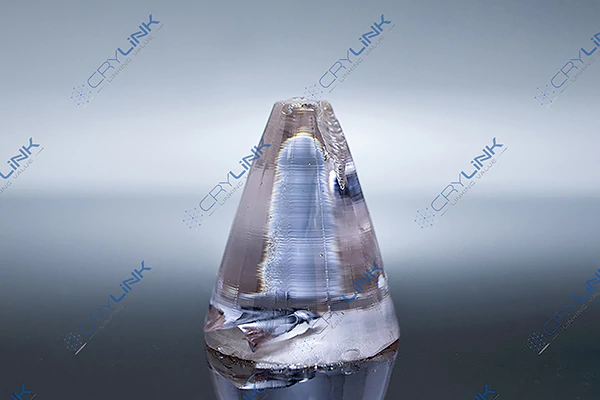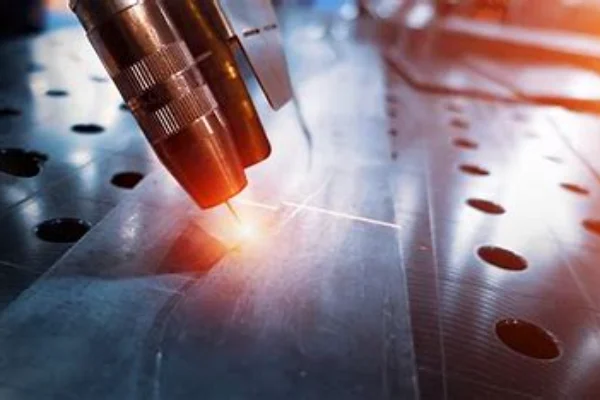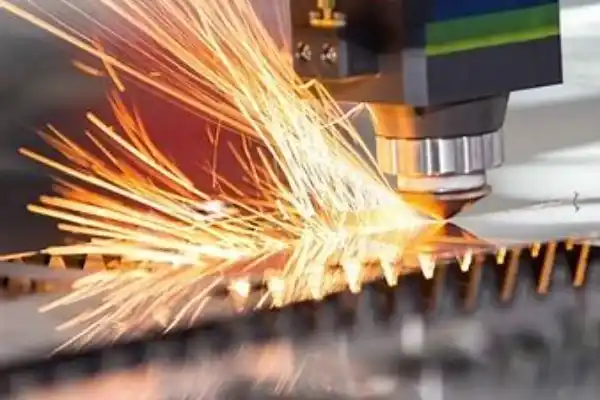The core of high-energy solid-state lasers: gain medium
The heart of any high-energy solid-state laser lies in its gain medium. This is the component that plays a pivotal role in determining the laser’s output characteristics. Essentially, the gain medium is the substance within the laser that amplifies the optical signal. This amplification occurs when the gain medium is “pumped” or energized by an external source of energy.
Common gain media and their characteristics
There are several types of gain media that are commonly used in high-energy solid-state lasers. These include:
- Neodymium-doped yttrium aluminum garnet (Nd:YAG): This is one of the most popular choices for gain media. Nd:YAG has the capability to produce infrared light at a wavelength of 1064 nm. Its popularity stems from its robustness, efficiency, and the quality of the beam it produces.

- Titanium-doped sapphire (Ti:Sapphire): This gain medium is renowned for its use in ultrashort pulse lasers. Ti:Sapphire lasers can produce wavelengths ranging from a broad spectrum of 650 nanometers to 1100 nanometers. This wide range makes it a versatile choice for various applications.
- Doped glass: This type of gain medium is primarily used in high-energy, high-power laser systems. One of its notable applications is in large-scale experiments, such as the National Ignition Facility. Doped glass lasers are designed to handle immense power, making them suitable for groundbreaking scientific research.
Factors to consider when choosing a gain medium
Selecting the Right Gain Medium for High-Energy Solid-State Lasers
The gain medium is the heart of a high-energy solid-state laser. While the desired laser wavelength is a primary consideration, there are several other pivotal factors that play a role in determining the most suitable gain medium for a specific application.
Pulse Duration: The pulse duration is the length of time the laser emits light during a single cycle. Depending on the specific application, lasers may need to produce a continuous beam for an extended period or short, intense pulses. For instance, medical lasers used for skin treatments might require short pulses to minimize damage to surrounding tissues, while industrial lasers used for cutting might need a continuous beam. Therefore, it’s essential to choose a gain medium that aligns with the desired pulse duration to ensure optimal performance.

Average Output Power and Peak Power: The average output power refers to the mean power emitted by the laser over a specific period, while peak power pertains to the maximum power output during a pulse. The gain medium should be robust enough to handle these power requirements without deteriorating over time. A mismatch can lead to reduced efficiency and a shorter lifespan of the laser system.
Thermal Properties: One of the significant challenges with high-energy lasers is the heat they generate. The gain medium’s ability to manage and dissipate this heat is paramount. If the gain medium cannot handle the heat effectively, it risks thermal damage, which can compromise the laser’s performance and safety. For instance, a gain medium with poor thermal properties might lead to beam distortion or even system failure during high-power operations.
The gain medium is not just a component but the very essence of high-energy solid-state lasers. Its selection goes beyond the basic wavelength requirements and delves deep into the operational demands and desired output characteristics of the laser. By giving due consideration to factors like pulse duration, power requirements, and thermal properties, one can ensure the efficiency, safety, and longevity of the laser system. Making an informed choice in this regard is crucial for the success and reliability of any laser-based application.
National Defense: A Game Changer
In the realm of national defense, technology continually evolves to counter emerging threats. Among these advancements, high-energy solid-state lasers have emerged as a game-changing tool, revolutionizing modern defense mechanisms.

Missile Defense Systems: The increasing sophistication of missile systems worldwide necessitates advanced countermeasures. High-energy solid-state lasers offer a solution. Unlike traditional defense mechanisms that rely on physical projectiles, these lasers use concentrated beams of light to intercept and neutralize incoming threats. This capability ensures the safety of both strategic assets and population centers, providing a rapid response to potential missile attacks.
Drones and UAV Neutralization: The proliferation of drones and Unmanned Aerial Vehicles (UAVs) presents a new set of challenges for defense systems. These devices, often small and agile, can be hard to detect and intercept using conventional means. However, with the precision targeting capabilities of high-energy solid-state lasers, it’s possible to disable drones swiftly, rendering them ineffective and preventing potential threats from the sky.
Medical Advancements: Healing with Precision
Beyond defense, the medical field has also benefited immensely from the precision and capabilities of high-energy solid-state lasers.
Ophthalmology: Vision correction surgeries, such as LASIK, have transformed the lives of millions. High-energy solid-state lasers play a crucial role in these procedures, reshaping the cornea with unparalleled accuracy. This precision ensures that patients can achieve improved vision with minimal invasion, reducing recovery times and potential complications.

Dermatology: The world of skin care and treatment has seen significant advancements with the introduction of laser technology. Whether it’s the removal of unwanted tattoos or the treatment of various skin conditions, high-energy solid-state lasers provide a solution. Their precision ensures that the targeted area is treated effectively while causing minimal damage to surrounding tissues, leading to better results and reduced healing times.
Material Processing: Crafting the Future
The world of material processing has witnessed a paradigm shift with the advent of high-energy solid-state lasers. These lasers, with their unmatched precision and power, have paved the way for innovations that were once deemed impossible.
Metal Cutting and Welding: Traditional methods of metal cutting and welding often faced challenges in terms of precision, especially for intricate designs. High-energy solid-state lasers have revolutionized this domain. Their pinpoint accuracy ensures that even the most complex designs are executed flawlessly. Moreover, when it comes to welding, these lasers provide strong, durable welds, ensuring the longevity and integrity of the final product. Industries ranging from automotive to aerospace now rely on these lasers for their manufacturing processes.

Engraving: The art of engraving has been elevated to new heights with the introduction of high-energy solid-state lasers. Whether it’s the delicate task of etching intricate designs onto jewelry or the industrial requirement of marking components with serial numbers or barcodes, these lasers deliver unparalleled detail. The precision they offer ensures that engravings are not only aesthetically pleasing but also durable and resistant to wear.
Scientific Research: Pushing Boundaries
The impact of high-energy solid-state lasers isn’t confined to industrial applications. In the hallowed halls of research labs worldwide, these lasers are instrumental in expanding the horizons of human knowledge.
Particle Acceleration: The field of particle physics seeks to understand the fundamental particles that make up our universe. High-energy solid-state lasers play a pivotal role in this endeavor. They are used in particle accelerators to boost particles to near-light speeds, allowing scientists to study their properties and interactions. These experiments have been crucial in unlocking the mysteries of the universe, from understanding the Higgs boson to exploring the nature of dark matter.
Spectroscopy: Spectroscopy is the study of the interaction between matter and electromagnetic radiation. High-energy solid-state lasers, with their ability to produce pure and consistent wavelengths, have become invaluable tools in this field. They aid scientists in identifying materials, studying molecular structures, and understanding chemical compositions. This knowledge has applications in numerous sectors, from environmental monitoring to pharmaceutical development.
Successful Cases and Application Examples
The transformative power of high-energy solid-state lasers is evident across various sectors, showcasing their versatility and efficiency. Here are some notable applications that underscore their impact:
Defense: In recent years, the defense sector has witnessed a significant technological leap with the integration of laser systems. A prime example is the U.S. Navy’s successful test of a ship-mounted laser. This advanced system is designed to neutralize potential threats at sea, from drones to small boats, enhancing maritime security. Such innovations not only bolster defense capabilities but also reduce the reliance on traditional ammunition, paving the way for a new era of warfare.
Medical: The medical field has reaped immense benefits from laser technology. LASIK surgeries stand out as a testament to this. With the unparalleled precision of high-energy solid-state lasers, ophthalmologists have been able to correct the vision of millions of individuals worldwide. This minimally invasive procedure offers a quick recovery time and has revolutionized eye care, reducing the dependency on glasses or contact lenses for many.
Industrial: The industrial sector, particularly automobile manufacturing, has embraced lasers for their efficiency and precision. Leading automobile manufacturers globally have integrated these lasers into their production lines, especially for welding processes. The result? Vehicles that boast enhanced strength, durability, and safety. This application not only ensures the longevity of the vehicles but also underscores the commitment of manufacturers to prioritize passenger safety.
Conclusion
High-energy solid-state lasers have undeniably transformed numerous sectors, driving innovation and ensuring efficiency. Their wide range of applications, from defense to research, underscores their significance in today’s world. As technology continues to advance, we can only anticipate even broader applications and more success stories in the future.
FAQs
- What makes high-energy solid-state lasers ideal for defense systems?
- Their ability to deliver concentrated energy over long distances makes them perfect for neutralizing threats.
- How do these lasers aid in medical treatments?
- Their precision ensures minimal invasion and damage, making treatments like LASIK and tattoo removal efficient.
- Why are they preferred in material processing?
- Their efficiency and precision make them ideal for tasks like metal cutting, welding, and engraving.
- How do these lasers benefit scientific research?
- They play a crucial role in experiments, from particle acceleration to spectroscopy, aiding in groundbreaking discoveries.
- Are there any safety concerns associated with these lasers?
- While they are efficient, safety precautions are essential, especially in medical and industrial applications, to prevent unintended damage.

Frank
Frank graduated from the University of Shanghai for Science and Technology, majoring in optics. As a technical engineer at Crylink Company, he deeply understands crystal materials and laser components.
Related Video(s) with this Article
Related Product(s) with this Article
Related Application(s) with this Article
